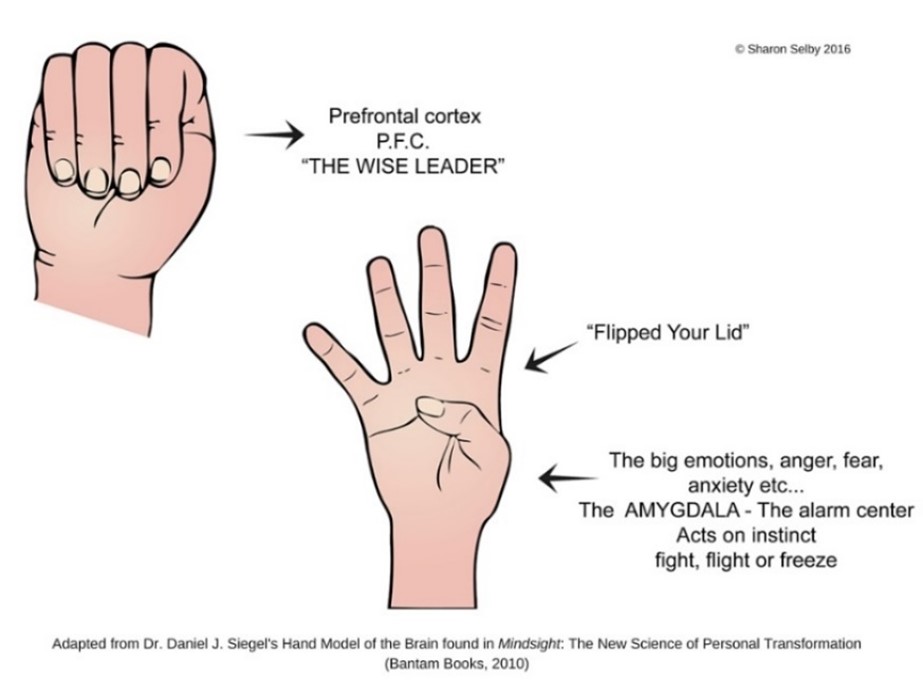The human brain is a truly amazing organ. It helps us stay alive and enables us to make sense of and respond to the world around us. When all parts of our brain work together, we can remain calm and connected, even during times of heightened emotion. However, there are times when our brains can cause some trouble, particularly when we become angry or anxious.
When we experience emotions with intensity and temporarily lose control of our actions, this is called “flipping the lid”.
Flipping the lid occurs when our mid brain, (the seat of our emotions) takes over and becomes disconnected from the more rational upper brain. Logic no longer influences our emotions, and we might act in ways that shock not only others, but also ourselves, even where there is no real danger. The following hand model example of the brain is a helpful way of showing the functions of the brain and what happens when we ‘flip our lids’.
Follow these instructions to find out more about how the hand model works.
- Place your hand in front of your face, palm facing you.
- Fold your thumb over your palm, this represents your ‘amygdala’, which is the emotional centre of your brain. It’s like a smoke detector.
- Now fold your remaining four fingers over the top of your thumb, these represent your cortex. It’s right behind your forehead and this is responsible for things like thinking, analysing and decision making.

Looking at your hand now, this is the ideal, when your cortex and amygdala are engaged with each other, working as a team.
If you face an emergency, such as a housefire, your cortex will try to save your life. It does this by shutting off and taking a step back.
- You can see this by unfolding your four fingers from over your thumb – flipping your fingers up – you have “flipped your lid”.
This shows what happens when your brain is handing things over to the amygdala to handle. There is no time for thinking or decision making here. So, your amygdala will flood your body with adrenaline and cortisol, helping you to run faster and get out of there, saving your life. You may also have heard this referred to as ‘fight or flight’.
Now imagine 5 years later you smell smoke and hear a fire engine. Your amygdala doesn’t store things like dates and times, it largely operates through the senses. So, with these smells and sounds flooding into your brain, it will assume you are facing another emergency, just like that housefire in the past. Therefore, it will respond the same way it did then. But the difference is, you are safe this time, even though you suddenly feel very anxious.
What do you need to do to calm the anxiety? The aim is to re-engage your cortex again.
Some useful ways to do this are:
- to count backwards from 100 by 3’s
- list 5 things that are purple, red etc.
- list things you can hear, smell, see etc.
- Another idea is to list all the schoolteachers you can remember
- You can also make up your own lists.
While doing this, slowly fold your 4 fingers back onto the palm of your hand while breathing deeply. This will help calm you down as you re-engage your cortex and reassure your brain that you aren’t facing an emergency.
We need anxiety. It has a very important role, to keep you safe, and it’s designed to help you. But sometimes it causes us to temporarily lose control of our actions and make mountains out of molehills.
If you would like to get help with controlling your anxiety, Ability Options offers counselling services that are professional, reliable, and focused on positive outcomes. We offer one on one counselling and psychological services for people over 16 years of age. Call us on 1300 422 454 to find out more.


